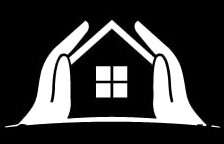Having small palm trees for pool area is a great way to accentuate the beauty of your home.
Whether organic or artificial, plants are good details that enhance the home’s look.
Choosing which plants are best for a particular setting can be difficult for people unfamiliar with home decor rules.
Fortunately, this article can guide anyone needing ideas of small palm trees for pool areas.
Small Palm Trees For Pool Area

When choosing which outlook best suits the scenery, homeowners have different priorities and motivations behind their interior and exterior decoration choices.
It could be for security reasons to some, aesthetics to others, tradition, or just following up with trends.
A poolside home is one way many beautify their homes, but what is a poolside without some trees around it?
There are different trees that you can plant around the pool area.
However, not all may be suitable for a residential home because some trees grow so big that they threaten the structure’s foundation.
While other trees are difficult to maintain because they shed dead leaves, small trees are safe and easy to maintain. Here are some of the small palm trees for the pool area;
1. Mediterranean Fan Palm (Chamaerops humilis)
The Mediterranean Fan Palm is a medium-sized tree that is native to Europe. It has its fronds shaped like a fan and has its trunks clumped together to give it a full and plump appearance.
The tree requires little maintenance and can withstand drought and heavy rainfall. The thickness of the trunks makes them suitable to enhance your privacy and improve your pool area’s appearance.
2. Pygmy Date Palm (Phoenix roebelenii)
Pygmy Date Palm is suitable to plant in-between trees, along walkways, and around the pool, because they have non-invasive roots that will not weaken any structure.
3. Pindo Palm (Butia capitate)
This is another type of small palm tree that sits pretty by your pool area. It has a slow growth rate and non-invasive roots that will not threaten the foundation of your pool.
The fronds have a silvery-green appearance that can enhance the look of any environment you plant.
Due to its diminutive growth, it requires little maintenance and can survive in areas with very harsh weather conditions.
4. Bismarck Palm (Bismarckia nobilis)
Bismarck Palm is another tree that can add dramatic looks to your backyard. It has evergreen leaves with steel-blue fronds, making it colorful and attractive.
But unlike other small palm trees that withstand harsh weather conditions, this tree becomes very vulnerable when pruned and can easily be damaged by a windstorm.
Knowing which plant fits with the location of your home can also play a role in the type of trees to go for.
However, before deciding which tree to plant around your pool area, consider why people plant these trees in the first place.
5. Dwarf Palmetto (Sabal minor)
This palm species is among the hardiest palms. It is primarily trunkless, but some trees do have trunks.
It has petioles that hold fan-shaped leaves reaching about 90 cm in diameter.
It produces creamy-white flowers with a pleasant scent that can grow up to 6 feet tall. The flowers eventually turn into black fruits.
Dwarf Palmetto is a hardy species that can survive -10 degrees without leaf damage.
The plant is easy to propagate by seed and is drought-tolerant once established.
6. Sago Palms ( Cycas revoluta)
The Sago has a close semblance with the Mediterranean Fan Palm, only that the fronts are not shaped like fans.
The tree is among the oldest species of palms and may have been around for over 200 million years.
It also has non-invasive roots and survives under shade and in harsh weather conditions.
7. Bottle Palm (Hyophorbe lagenicaulis)
Although the Bottle Palm’s trunk looks like a bottle, it is a beautiful evergreen plant with a pale gray to the white trunk.
Despite this, the bottle shape gradually fades and disappears as the plant matures and elongates. A canopy of glossy green feather-like leaves is on top of the trunk.
A pale green crown shaft supports the fronds. It is salt water and drought-tolerant and can survive at sub-zero temperatures.
8. Citrus (Citrus Spp)
Citrus trees add color and life to a pool or patio garden. These plants also allow urban farmers or those with small-space gardens to grow a fruit-producing tree.
Some citrus species are best suited for growing in containers or small areas.
An advantage of growing citrus trees in containers or small spaces is that you can move them around to follow the sun or protect them from it.
Reasons For Planting Trees Around The Pool Area

1. Shade and Cool Air
Planting Trees around the pool area facilitates the movement of the breeze around the area. The shade serves as a great relaxation point when you’re not interested in going into the water.
You can enjoy the view and fresh air by sitting under the shade of the tree during the daytime.
But not all plants can guarantee a peaceful relaxation moment, especially when the plants are interrupted by the use of the pool.
This is why you must be meticulous about the type of trees to plant around the pool.
2. Enhanced Privacy
Even though outdoor pools do not guarantee much privacy, you can enhance your privacy by planting trees around the pool area.
The trees prevent outsiders who may be spying from seeing so much while you have fun.
3. Hinders Algae Growth
Algae Growth in pools is a common sight for many homeowners.
Some have adopted regular pool cleaning and treatment to reduce algae growth, yet this technique doesn’t yield much.
Not only is it time and energy-consuming, it is also costly to regularly maintain pools.
Algae thrive on nitrogen which plants use to manufacture food. When you plant trees, the trees take up a greater percentage of the nitrogen and release oxygen which we need. Which then inhibits the growth of algae in the pool.
4. Increases Property Value
If you plan to sell your property someday, you must increase the value to get the best offer.
Just like landed properties get better offers than plain lands, the more valuable your property has, the better offers you’d get.
Planting trees around the house, especially the pool area, is a great way to increase the value of your property without spending so much.
Property owners can increase their property value by building fences, concrete walkways, and driveways or developing artificial springs/waterfalls.
5. It Makes The Pool More Attractive
Trees enhance the looks of your pool area. It gives a good background for pictures and videos during holidays.
It can also give you better bargaining power when you want to lease it out for occasions.
Formerly, pools were seen as a luxury for certain homes and hotels.
However, homeowners are beginning to change the narrative by including a pool area in their residential homes.
The pool provides a great relaxation area and an arena for family get-togethers and other poolside games.
Not just that, homeowners with pools now lease out their pool areas for events in exchange for money. Pools generally have become an integral part of home designs.
Having a pool may seem like the ideal relaxation area, but people have become more creative with adding more details to their pool areas.
However, many homeowners need clarification about choosing a landscape for their pool areas.
Some people go for vintage tents with thatched roofs, while others go with a wall of graffiti or trees, depending on their preferences.
Trees create a make-believe feeling of being at a beach or outdoor environment different from your home.
It beautifies the home and has a soothing effect on your mind so that you can mentally change your environment without leaving your comfort zone.
FAQs
What Type of Palm Tree Species Grows Near Swimming Pool?
The essential factors to consider when choosing poolside palm trees are:
- climate
- the size of the tree
- the invasiveness of its roots
- and how to deal with seeds
Most small palm trees can withstand various climate conditions, ranging from extreme droughts to freezing. The most important thing to do is water them before they wilt.
The distance between a plant and a swimming pool depends on its root structure.
Because PalPalms have non-invasive roots, they are popular because extensive roots can damage the pool.
Growing trees by your swimming pool enhance privacy and provide shade, but leaves and seeds drop from them, making your pool dirty, which means you have to clean it more often.
Does Chlorine Affect Palm Trees?
Chlorine is essential to keeping your swimming pool water clean and pathogens-free.
Palm trees are resistant to this chemical, unlike other plants.
The waxy coating on their fronds protects them from chlorine splashes.
How Does Drainage Affect Palm Trees?
Regarding drainage, sandy soils are the best, while clay soils are the worst.
Clay forms an impenetrable mass when it dries up, so palm trees cannot extract nutrients from it.
Due to its poor drainage, clay soil needs to be dug up and mixed with other soils to be useful. If left for a long period, this can cause root rot.
Read Also: Why your house smells like gas but has no leak
Conclusion
There are different types of Palm Trees for the pool area. Depending on your order of priority, please make sure that you consider the climate, size of the tree, how invasive the roots are, and how to maintain it.
As much as trees are essential to the pool area, not all trees can fit into every environment.

